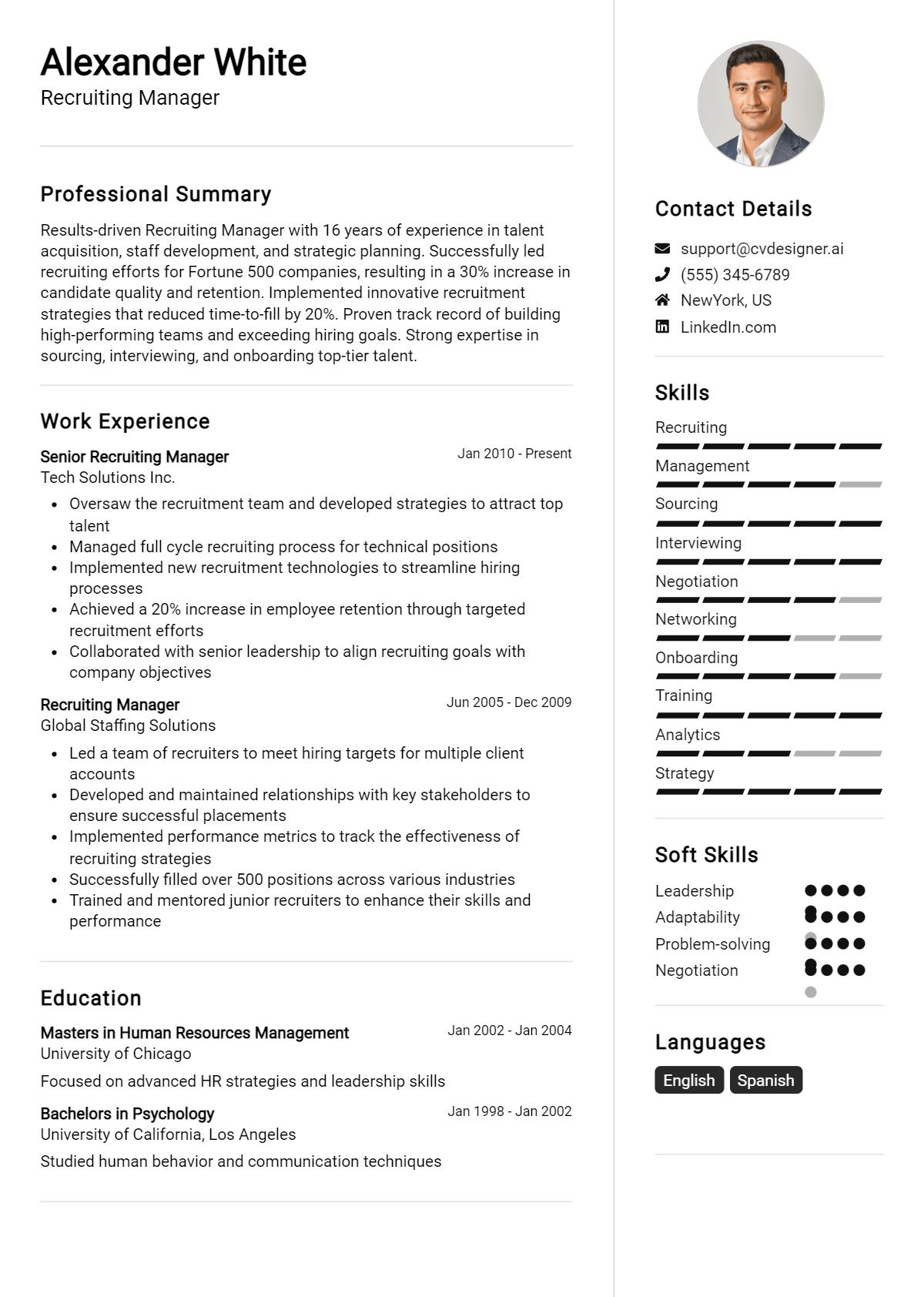Embarking on a job search, especially without a traditional work history, can often feel like navigating uncharted waters. Many individuals, from recent graduates to those contemplating a career shift, encounter the common challenge of a perceived lack of “experience.” However, this situation is not a barrier but rather a unique opportunity to highlight inherent strengths, untapped potential, and a fresh perspective that can be highly valuable to employers. The landscape of hiring is continually evolving, with a discernible shift towards a skills-based model where demonstrable abilities and potential are increasingly prioritized over a rigid, linear job history. This evolution means that valuable experience is multifaceted; it is not solely confined to paid employment but can be cultivated through a diverse array of sources, including academic projects, volunteer work, leadership roles in clubs, personal initiatives, and even hobbies.
This report serves as a comprehensive guide designed to empower individuals to identify, articulate, and strategically present these non-traditional experiences in a professional and impactful manner. It will navigate the essential components of a compelling CV or resume, delve into effective content creation strategies, explore how to leverage hidden strengths, provide guidance on tailoring applications for maximum impact, address crucial visual considerations, and outline the final steps for polishing a job-winning document.
Understanding the Landscape: CVs, Resumes, and Applicant Tracking Systems
Before diving into content creation, it is essential to understand the fundamental tools of job applications and the technological gatekeepers that often determine whether an application is even seen by a human.
CV vs. Resume: Key Differences and When to Use Each
The terms “CV” and “Resume” are often used interchangeably, yet they possess distinct characteristics and applications, particularly across different geographies and industries. Understanding these nuances is crucial for selecting the appropriate document, thereby preventing immediate disqualification due to format mismatch.
A Curriculum Vitae (CV), commonly used in the UK as the standard document for job applications, is typically a longer, more comprehensive document, often extending to two or more pages. Globally, CVs are predominantly reserved for academic, research, medical, or international roles. This document provides an exhaustive overview of an individual’s career, including all academic history, detailed qualifications, publications, presentations, research, awards, and professional affiliations.
In contrast, a Resume is a concise document, usually one to two pages in length, tailored specifically for the job being applied for. It is the predominant format in North America for most corporate and industry positions. A resume focuses on relevant skills, achievements, and experiences that directly align with the specific job requirements, omitting extraneous details to maintain brevity and impact.
The Applicant Tracking System (ATS): What It Is and Why It Matters
A significant factor in modern recruitment is the Applicant Tracking System (ATS). This sophisticated software is widely employed by employers, particularly larger organizations, to automate and streamline the recruitment process. The ATS’s primary function is to scan, filter, and rank resumes based on keywords and qualifications extracted directly from job descriptions.
The impact of ATS on job applications is profound: a substantial percentage of resumes, often 75% or more, never reach a human recruiter because they fail the initial ATS screening. This underscores the non-negotiable importance of ATS optimization for any online job application. Regardless of an individual’s experience level, an ATS-friendly format and meticulous keyword optimization are paramount. Without adherence to these technical requirements, even the most qualified candidate’s application may be overlooked, highlighting a critical, often unstated, aspect of the job application process.
This reality reveals that a resume serves a dual audience: it must first satisfy a machine before it can impress a human. This necessitates a careful balance between visual appeal and ATS compliance. The sheer volume of applications received by companies necessitates automated screening, meaning candidates must prioritize specific formatting rules, such as avoiding tables, using standard fonts, employing clear headings, and utilizing bullet points, to ensure their resume is even considered by a human reviewer. This technical hurdle forms a “hidden curriculum” in job applications; success depends not only on qualifications but also on a meticulous adherence to these often unstated technical rules. Seemingly minor errors or formatting choices can lead to immediate disqualification, regardless of a candidate’s actual potential or effort. Therefore, meticulous attention to detail and understanding these underlying technical requirements are as crucial as the content itself, especially for individuals without traditional experience who need every possible advantage to stand out.

Building Your Foundation: Essential Sections for a No-Experience Document
A well-structured CV or resume is the backbone of a successful job application. For individuals without extensive formal work history, certain sections become even more critical and require strategic customization to effectively highlight potential.
Contact Information
This section is the initial point of connection for recruiters, making accuracy, professionalism, and accessibility paramount. It should include the full legal name, a professional email address (avoiding informal or outdated addresses), a reliable phone number, and the city and ZIP code (full street addresses are generally unnecessary for privacy and modern practice). Crucially, individuals should include links to professional online profiles, such as a LinkedIn URL and any relevant online portfolio (e.g., GitHub for tech, Behance for design). These links must be functional and lead to polished, professional content that reinforces the candidate’s capabilities.
Personal Statement or Objective
For candidates lacking prior work experience, a resume objective is generally more effective than a traditional professional summary. While a summary typically highlights past achievements, an objective clearly articulates future career goals and potential contributions. This section serves as a concise “personal sales pitch,” ideally 1-3 sentences or around 150 words. It should clearly state career aspirations, highlight the most job-relevant skills, and express what the individual aims to achieve in the role or for the company.
The effectiveness of this section hinges on meticulous tailoring for each job application. Integrating keywords from the job description ensures that aspirations directly align with the employer’s needs, demonstrating genuine interest and fit. It is important to avoid generic phrases, clichés, or focusing solely on personal gain; instead, the emphasis should be on the value the individual can bring to the organization. This section is not merely an introduction but a persuasive opening that can immediately capture a recruiter’s attention and frame the rest of the resume positively, compelling them to read further. It acts as a mini-cover letter within the resume itself, requiring significant thought and customization for each application.
Education
For candidates without formal work experience, their educational background is often their strongest asset and should be prominently featured, typically near the top of the CV/resume. This strategic placement is part of a broader re-prioritization of resume sections, necessitated by the absence of a linear work history. The standard chronological resume format becomes less effective, making functional or combination formats that emphasize skills and education more viable.
This section should list the highest degree first, followed by previous qualifications. Essential details include the full degree name/major, the name and location of the academic institution, and years attended or expected graduation date. To further enhance this section, individuals should include their GPA if it is strong (typically 3.5 or higher) , academic honors such as Dean’s List,
cum laude, scholarships, or academic awards , and 3-5 relevant courses directly applicable to the job. If an official course name is unclear, it can be rephrased to highlight its relevance (e.g., “Introduction to Programming” becoming “Software Development Fundamentals”). Significant academic projects that demonstrate practical application of skills should also be briefly described. This section collectively demonstrates intellectual capability, discipline, foundational knowledge, and an aptitude for learning, all highly valued by employers.
Skills Section
Employers are increasingly prioritizing skills over traditional work history, making the skills section a pivotal component for entry-level candidates. This section should focus on 5-10
relevant skills, meticulously customized for each job application by matching skills mentioned in the job description.
Skills can be categorized into:
- Hard Skills: These are technical, measurable abilities often acquired through formal training or practice. Examples include software proficiency, programming languages (e.g., Python, Java), data analysis, SEO, and specific tools (e.g., Tableau, Photoshop).
- Soft Skills: These are interpersonal qualities that influence how an individual interacts with others and are highly transferable across various roles. Examples include communication, teamwork, problem-solving, leadership, adaptability, critical thinking, time management, and organization.
While a dedicated skills section is important, it is also beneficial to “sprinkle” relevant skills throughout other sections of the resume, such as within the objective, education, and relevant experience bullet points. This reinforces capabilities and improves ATS compatibility. A strong, tailored skills section directly addresses employer needs in a skills-based hiring environment, showcasing immediate value and potential.
Relevant Experience
This section represents a crucial adaptation for candidates without formal employment history. It replaces the traditional “work experience” section and should be used to highlight any and all experiences that have equipped the individual with job-relevant skills. This includes internships, volunteer roles, part-time jobs, significant academic projects, and impactful extracurricular activities.
For each relevant experience, a clear title or role should be provided (e.g., “Project Lead,” “Volunteer Coordinator”), along with the name of the organization or context (e.g., “University Capstone Project,” “Local Food Bank”), the dates of involvement, and a bulleted list detailing responsibilities and, most importantly, achievements. The focus should be heavily on transferable skills gained, and results should be quantified whenever possible. Strong action verbs should initiate each bullet point to demonstrate initiative and impact. This section collectively demonstrates practical application of skills, initiative, and a proactive approach to learning and contributing, even outside traditional employment structures.
Optional Sections
These sections offer additional opportunities to enhance a profile and provide a more holistic view of capabilities and personality.
- Certifications: Any professional credentials, online courses, or specialized training completed should be listed (e.g., Google Data Analytics Certificate, First Aid Certification, specific software certifications).
- Awards & Honors: Include any academic distinctions, scholarships, or community awards received.
- Languages: List any languages spoken, along with proficiency level (e.g., Conversational, Fluent, Native), as this is a highly valued transferable skill.
- Hobbies & Interests: If carefully chosen and relevant, these can add personality and subtly demonstrate soft skills (e.g., “Marathon Runner” implying discipline, “Blogger” implying written communication).
These optional sections provide supplementary evidence of talent, dedication, and well-roundedness, making an application more compelling and memorable.
Crafting Compelling Content: Showcasing Your Potential
The true power of a CV or resume with no traditional experience lies in its ability to effectively articulate potential and transferable abilities. This requires a strategic approach to content creation, moving beyond mere descriptions to demonstrate tangible value.
Identifying Transferable Skills
Transferable skills are versatile abilities not tied to a specific job but applicable across various industries and roles. These are often developed through diverse life experiences, not just paid employment. Individuals should deeply reflect on their academic projects, volunteer work, leadership roles in clubs, participation in sports, and even personal hobbies to pinpoint these valuable skills.
Highly sought-after transferable skills include:
- Communication: Encompassing both written (e.g., research papers, reports, blog posts) and oral (e.g., presentations, group discussions, public speaking, active listening, persuasive communication, conflict resolution) abilities.
- Teamwork/Collaboration: Demonstrated through group projects, sports teams, student organizations, and volunteer groups.
- Problem-Solving/Critical Thinking: Involves identifying issues, analyzing situations, determining causes, developing solutions, and assessing risks.
- Leadership: Evidenced by roles such as club captain, project lead, peer mentor, or organizing events.
- Organization/Time Management: Skills like managing academic workload, coordinating events, and executing personal projects.
- Adaptability: The ability to adjust to new challenges, environments, technologies, and unexpected changes.
- Research: Skills in collecting, analyzing, and synthesizing information from various sources.
A systematic approach, such as the Academic Achievement Translation Framework , can be invaluable for converting academic achievements into professional language:
- List Your Academic Accomplishments: Inventory all meaningful achievements, regardless of their initial perceived significance.
- Identify the Skills Demonstrated: Map out both technical and transferable skills involved in each accomplishment.
- Reframe Using Professional Language: Translate academic jargon into workplace-relevant terms.
- Add Context and Results (STAR Method): Apply the Situation, Task, Action, Result method to provide concrete examples and highlight outcomes.
This process is the core of a no-experience CV/resume, as it effectively demonstrates a candidate’s capabilities and potential even without formal job titles or extensive work history. The table below illustrates how diverse experiences can be translated into valuable, quantifiable skills.
Beyond the Classroom: Translating Your Experiences into Core Transferable Skills
| Activity/Experience Type | Example Activity | Key Transferable Skills Demonstrated | Quantifiable Impact (Example) |
| Academic Projects | Led a final year capstone project on sustainable urban planning. | Project Management, Critical Thinking, Research, Data Analysis, Presentation Skills | “Developed a comprehensive urban development plan that optimized land use and infrastructure, increasing green spaces by 15% and improving public transportation accessibility by 20%.” |
| Volunteer Work | Coordinated weekly food distribution at a local food bank. | Organization, Teamwork, Problem-Solving, Communication, Community Engagement | “Coordinated food distribution to 200+ families weekly; implemented inventory management system, reducing waste by 15%.” |
| Extracurricular Activities | Served as Vice-President of the University Marketing Club. | Leadership, Event Planning, Team Coordination, Marketing Strategy, Communication | “Led a team to organize successful campus-wide events and increased club membership by 30%.” |
| Personal Projects/Hobbies | Developed and managed a fan site for a musical band. | Digital Marketing, Content Creation, Social Media Management, Analytics, Initiative | “Created and managed a fan site for a musical band, leading to a mention in a Loudwire article and increasing site traffic by 15%.” |
| Part-time/Casual Work | Provided tutoring in mathematics for high school students. | Instruction, Patience, Communication, Problem-Solving, Time Management | “Helped students improve their grades by an average of 15% across subjects; increased student retention by 20% through personalized learning plans.” |
Quantifying Achievements
Simply listing responsibilities is insufficient; demonstrating impact through quantifiable achievements is crucial for making a resume compelling, even for non-traditional roles. To effectively quantify accomplishments, individuals should ask themselves key questions:
- What was the numerical impact of the actions (e.g., percentages, dollar amounts, number of people)?
- How long did the action or result take?
- Were clients, customers, or other teams involved? How many?
- Was time or money saved? By how much?
Providing “before and after” examples vividly illustrates the transformation from vague statements to impactful, quantified achievements. For instance, “Participated in group project” becomes “Collaborated with a 4-person team to develop solutions that reduced process inefficiency by 32%”. Quantifiable achievements provide concrete, evidence-based proof of capability, value, and effectiveness, making claims more believable and impactful to recruiters and ATS alike.
The consistent advice to quantify achievements and use action verbs, rather than simply stating skills, embodies a “show, don’t tell” principle. Recruiters seek concrete evidence of impact and capability, not unsubstantiated claims. This approach results in a more compelling, believable, and memorable resume that stands out from generic applications. It also requires a fundamental shift in mindset from merely listing duties to articulating accomplishments and their measurable results, which can be a significant hurdle for those without traditional job metrics or experience in formal reporting. This approach also directly benefits ATS scanning, as quantified results often contain specific keywords.
Powerful Action Verbs
Starting each bullet point with a strong action verb is critically important. This shifts the focus from passive descriptions of duties to active demonstrations of accomplishments and initiative, while avoiding weak phrases like “responsible for” or “duties included”.
A categorized list of impactful action verbs includes:
- Leadership/Management: Led, Managed, Coordinated, Directed, Guided, Mentored, Supervised, Organized.
- Communication/Collaboration: Communicated, Collaborated, Presented, Liaised, Negotiated, Facilitated, Articulated, Conveyed.
- Problem-Solving/Analytical: Analyzed, Resolved, Diagnosed, Evaluated, Assessed, Identified, Researched, Optimized.
- Achievement/Impact: Achieved, Increased, Decreased, Generated, Improved, Reduced, Boosted, Exceeded, Streamlined, Saved.
- Creative/Technical: Developed, Designed, Created, Implemented, Built, Programmed, Customized, Engineered.
Action verbs make descriptions dynamic, achievement-oriented, and significantly improve readability for human eyes while also boosting ATS compatibility by clearly signaling skills and contributions. The advice to “sprinkle skills throughout a resume” and to use frameworks like the STAR method demonstrates that resume content is not a collection of isolated facts but a cohesive, interconnected narrative. Action verbs, quantifiable achievements, and transferable skills are not independent tips but synergistic elements that amplify each other’s impact. This approach is rooted in the need for a persuasive document that tells a compelling story of a candidate’s value, resulting in a more persuasive and memorable resume that builds a strong case for the candidate’s fit. It implies that candidates should view their resume as a unified sales document where every section supports the overall “personal brand” , rather than a simple data dump.
Leveraging Non-Traditional Experience: Your Hidden Strengths
For individuals without a traditional employment history, identifying and effectively presenting non-traditional experiences is paramount. These experiences are not merely fillers but represent genuine strengths and valuable skill development. The sheer breadth of experiences that can be leveraged, from academic projects to volunteer work, extracurriculars, and personal initiatives , suggests that candidates should adopt a “portfolio of experiences” mindset. This approach recognizes that diverse, seemingly disparate activities, when framed correctly, can collectively demonstrate a rich and relevant skill set. This proactive strategy for continuous skill development turns a perceived weakness into a unique strength.
Academic Projects
Academic projects, including coursework, research papers, and group assignments, can be transformed into compelling “relevant experience” entries, especially for students and recent graduates. When listing these, it is important to include a project name (even if self-assigned, give it a professional title), the dates or semester it took place, and a concise description highlighting the skills used and problems solved. Key elements to emphasize are the methodologies, tools, and software utilized (e.g., “Utilized Python for data analysis,” “Designed interfaces using Figma”) , and results should be quantified whenever possible (e.g., “reduced data retrieval time by 60%”). If there are multiple significant academic projects, creating a dedicated “Relevant Projects” section can give them more prominence. Academic projects directly demonstrate technical skills, analytical abilities, problem-solving, research capabilities, and project management skills—all highly valued in the professional world.
Volunteer Work & Community Involvement
Volunteer work is incredibly valuable and can be as impactful as paid employment for demonstrating commitment, work ethic, and a wide range of transferable skills. Volunteer roles should be treated like jobs, detailing the organization, the role, the duration of involvement, specific tasks undertaken, and the skills developed (e.g., problem-solving, relationship building, teamwork, communication, organization). Crucially, the impact should be quantified; for example, instead of “Organized food drives,” one might write “Organized monthly food drives, distributing over 1,000 pounds of food each month to 200+ families”. If highly relevant or the most significant experience, it can be placed in the “Relevant Experience” section or a dedicated “Volunteer Experience” section near the top of the resume. This demonstrates initiative, commitment, social responsibility, empathy, and the practical application of transferable skills in a real-world setting.
Extracurricular Activities & Leadership Roles
Active participation in school activities, clubs, societies, and sports teams effectively showcases passion, skill development, and the ability to work in a team. When listing these, individuals should detail the organization, their role (e.g., “Member,” “Captain,” “President”), dates of involvement, and specific responsibilities or achievements. For leadership positions (e.g., captain of a sports team, prefect, student association president), it is important to outline the skills gained, such as organization, management, team leadership, and conflict resolution. This demonstrates reliability, organization, management skills, teamwork, and leadership potential, providing a well-rounded view of capabilities beyond academics.
Personal Projects & Hobbies
Candidates should include personal projects (e.g., managing a personal website or blog, creating a piece of art, developing a coding project, freelance work, or even significant DIY endeavors) that demonstrate creativity, initiative, and specific skills. If a hobby is relevant to the job (e.g., photography for a marketing role, writing a blog for a content creation role), it can be a valuable addition, framed to highlight skills gained. A dedicated “Personal Projects” or “Relevant Projects” section should be created, providing a project name, dates, and bullet points describing actions, tools used, and results achieved, focusing on hard skills. This provides compelling evidence of self-driven learning, passion, practical application of skills, and initiative outside formal structures, signaling a proactive and engaged individual.
The emphasis on personal projects, online courses, and self-taught skills highlights the immense value of
proactive learning and initiative. This is not just about what has been done, but what an individual chooses to do to develop themselves and demonstrate passion. This drive is highly valued by employers who seek self-starters capable of adapting and learning independently. Even without formal opportunities, a candidate can strategically strengthen their resume by actively pursuing skill development and applying knowledge through personal endeavors, signaling a strong work ethic and genuine enthusiasm.
Internships & Part-time Roles
Even brief, unpaid, or seemingly unrelated internships or part-time jobs are highly valuable experiences. When listing these, individuals should include the position name, company name, location, and duration. Crucially, the focus should be on the transferable skills gained and quantifiable achievements, linking them to the requirements of the target role. For example, a retail job can highlight customer service, sales, inventory management, and teamwork. These experiences offer real-world exposure to a professional environment, demonstrating employability, responsibility, and the ability to function within an organizational structure.
Tailoring for Impact: Standing Out from the Crowd
In a competitive job market, a generic resume is ineffective. Standing out requires strategic tailoring that aligns an application directly with employer needs.
Customizing for Each Job
A “one-size-fits-all” resume is highly ineffective and will likely be overlooked. Candidates must meticulously analyze each job description to identify the specific skills, experiences, qualifications, and even company values that the employer is seeking. This involves breaking down the job advertisement into its core requirements.
The key sections of the resume—the objective/personal statement, skills section, and relevant experience bullet points—should be tailored to directly align with the specific job description. This means rephrasing, prioritizing, and sometimes omitting information to maximize relevance. Customization is paramount as it significantly increases the chances of passing ATS screening and, more importantly, impresses hiring managers by demonstrating genuine interest, direct relevance, and a clear understanding of the role’s needs.
Keywords and ATS Optimization
Keywords play a critical role in ensuring a resume passes through Applicant Tracking Systems (ATS); without the right keywords, the resume may never reach a human recruiter. The strategy involves:
- Identifying Keywords: Carefully reading the job description and highlighting frequently mentioned skills, qualifications, industry-specific terms, and even variations of the job title.
- Strategic Integration: Naturally incorporating these keywords throughout the resume—in the objective/summary, skills section, relevant experience bullet points, and even relevant coursework. “Keyword stuffing” should be avoided, as it can make the resume unreadable to humans.
- Acronyms: If an industry-specific acronym is used (e.g., “AAC devices”), it should be spelled out once with the acronym in parentheses (e.g., “Augmentative and Alternative Communication (AAC) devices”) to ensure both ATS and human readers understand.
Keyword optimization is essential for getting a resume past the initial automated screening, making it a non-negotiable step for online applications. The strong emphasis on “tailoring” and “keywords” reveals a fundamental “mirroring” strategy: candidates are advised to reflect the language of the job description back to the employer. This approach ensures a higher match rate in automated systems and quicker understanding of fit by human reviewers. Effective resume writing is less about generic self-promotion and more about strategic alignment with specific job requirements, acting as a direct, data-driven response to the employer’s stated needs.
Developing Your Personal Brand
Personal branding is the cohesive story an individual tells about themselves in the professional world. It is how one wants to be perceived, understood, and remembered, extending beyond a mere list of qualifications. Key components include:
- Unique Value Proposition (UVP): Identifying what truly differentiates an individual from other candidates—the unique combination of skills, experiences, and values brought to the table (e.g., a creative problem-solver, a data-driven strategist, or someone who excels in collaborative environments).
- Consistency: Ensuring the personal brand is reflected consistently across all application materials (resume, cover letter, LinkedIn profile, and any online portfolio).
This brand should be applied by using active language and quantifiable achievements in the personal statement and experience sections to demonstrate the UVP. A strong personal brand helps an individual stand out in a competitive market, positions them as a memorable candidate, and communicates their unique value proposition effectively to potential employers.
Addressing Employment Gaps
Employment gaps can be a concern for recruiters, but they are not necessarily career-ending. The key advice is to be transparent and proactive in addressing any gaps, focusing on what was
done during that time, rather than simply stating a lack of employment. This includes highlighting activities such as upskilling or taking online courses/certifications, volunteer work or community involvement, personal projects or freelance work, or managing significant personal responsibilities (e.g., family care, health recovery).
A brief explanation of the gap can be included on the resume (e.g., in an optional section like “Professional Development” or a short note in the summary), but the primary discussion should be reserved for the interview, where it can be elaborated upon positively and confidently. It is advisable to avoid leading the resume with an explanation of a gap. Transparently and constructively addressing employment gaps transforms a potential negative into an opportunity to showcase resilience, continuous learning, and personal growth, demonstrating maturity and responsibility.
The advice on personal branding and addressing employment gaps underscores the critical importance of
proactive narrative control. Instead of passively allowing a lack of traditional experience or a career gap to define them, individuals are explicitly encouraged to actively shape and articulate their own professional story. This approach aims to overcome initial biases or assumptions that recruiters might form, resulting in a positive, compelling, and consistent portrayal of one’s professional journey and potential. It implies that job seekers should view their job search as a strategic marketing campaign for themselves, where consistency, a clear message, and a positive spin are paramount across all touchpoints (resume, LinkedIn, cover letter, interview).
Visual Appeal & ATS Compliance: Balancing Design and Readability
Creating a visually appealing resume is important, but it must be balanced with the critical need for ATS compliance. This requires a nuanced understanding of design principles in the context of automated screening.
Choosing an ATS-Friendly Format
For the primary resume document, clean, simple, and minimalist layouts should be prioritized, as these designs are most easily parsed by Applicant Tracking Systems (ATS). Complex elements such as tables, text boxes, graphics, columns, and information placed in headers/footers should be avoided for the main body of the resume, as ATS often struggles to read and interpret these elements, potentially leading to the application being discarded.
Standard, clear, and traditional section headings like “Contact Information,” “Professional Summary,” “Education,” “Skills,” and “Relevant Experience” should always be used to help ATS accurately categorize information. For candidates without extensive work history, functional or combination resume formats are often most effective, as they strategically emphasize skills and education over a chronological employment timeline. Selecting an ATS-friendly format is the foundational step to ensure a resume is successfully read by automated systems, allowing it to reach a human recruiter for review.
Strategic Use of Visuals
Infographic resumes or highly visual designs are generally not recommended as the primary document for ATS-screened applications due to potential parsing issues. These visual documents are most effective when used as a
supplement to a traditional, ATS-friendly resume. They are particularly impactful for creative roles (e.g., graphic design, marketing, content creation, UI/UX) or for networking events where direct human interaction allows for visual engagement.
When used as a supplementary document, visuals can include charts, graphs, timelines, or icons to represent skills, achievements, and career progression in an engaging way. The focus should remain on results and quantifiable impact, using visuals to highlight key metrics. All images and graphics must be high-resolution and professionally designed to reflect positively on the personal brand. Crucially, a clear, professional link to the online portfolio or visual resume should be included within the contact information section of the main ATS-friendly resume. When used strategically as a supplementary tool, visuals can significantly enhance engagement and memorability for human readers, particularly in visually-driven industries, without compromising essential ATS compatibility.
The explicit differentiation between ATS-friendly formats (simple, text-based) and visually appealing formats (infographics, creative designs) suggests a “two-tiered” strategy. This means a primary, ATS-optimized resume for initial screening, and a secondary, visually rich document (portfolio, infographic resume) for human review, especially in creative fields. This approach addresses the technical barrier of ATS combined with the human desire for engaging content. Candidates who understand this dual requirement can maximize their chances of both passing automated filters and making a strong impression on human decision-makers. This implies that job seekers need to invest time in creating
both types of documents and understand when and how to deploy each effectively, tailoring their approach to the specific application method and industry. Furthermore, the advice against complex visuals within the primary ATS resume but encouragement for them as
supplements indicates that visuals serve as an
extension of the personal brand and a powerful demonstration of specific skills (e.g., design proficiency, data visualization, creativity), rather than a fundamental component of the core application document. This is due to the technical limitations of ATS software, which often strip or misinterpret graphical elements. Thus, visuals become a strategic tool for differentiation and skill demonstration rather than just aesthetic enhancement. Candidates should prioritize functionality (ATS compliance) first, then strategically layer on aesthetic appeal and skill showcases where appropriate and safe (e.g., a portfolio link in the contact section).
Font, Margins, and Spacing
Meticulous attention to formatting details is crucial for a clean, professional appearance, enhanced readability for human reviewers, and, most critically, accurate ATS parsing.
- Font: Individuals should stick to common, professional, and highly readable fonts such as Arial, Calibri, Helvetica, Times New Roman, Georgia, or Cambria. A consistent font should be used throughout the document. For body text, 11-12pt size is appropriate, and for headings, 14-16pt. Decorative, unusual, or multiple font styles should be avoided, as they can confuse ATS and distract human readers.
- Margins: Standard 1-inch margins on all four sides of the document should be set. This provides adequate white space and prevents content from being cut off during printing or parsing.
- Spacing: Single spacing for body text is recommended, with a single extra line space between sections to improve readability and visual organization.
- Bullet Points: Standard black dots should be used for bullet points. Fancy or non-traditional bullet symbols (e.g., stars, diamonds, checkboxes) should be avoided, as these can be misinterpreted by ATS.
- White Space: Embracing white space on the resume makes the document less overwhelming, easier to read, and highlights key information. There is no need to fill every inch of the page.
The Final Polish: Ensuring Perfection
The final stage of resume preparation is as critical as content creation. A polished document reflects professionalism and attention to detail.
Proofreading and Editing
Meticulous proofreading is non-negotiable. Typos and grammatical errors are the most common and costly mistakes on a resume, with a staggering 77% of hiring managers reportedly rejecting resumes containing such errors. Multiple rounds of proofreading are recommended. It is advisable to read the resume aloud to catch awkward phrasing, print it out for a fresh perspective, and, ideally, ask a trusted friend, mentor, or professional to review it for any overlooked mistakes.
Conclusions and Recommendations
For individuals navigating the job market without traditional work experience, the path to securing a desired role lies in a strategic, multi-faceted approach to CV and resume creation. The analysis consistently reveals that the definition of “experience” has broadened significantly, encompassing a rich “portfolio of experiences” beyond paid employment. This shift necessitates a proactive mindset, where individuals actively identify, cultivate, and articulate transferable skills gained from academic pursuits, volunteer work, extracurricular activities, and personal projects.
The critical importance of Applicant Tracking Systems (ATS) cannot be overstated. A resume must first be machine-readable before it can impress a human. This dictates a “two-tiered” strategy: a primary, ATS-optimized document for initial screening, characterized by simple formatting, standard headings, and strategic keyword integration. Supplementary, visually rich documents, such as online portfolios or infographic resumes, can then serve as powerful extensions of a personal brand, particularly for creative roles, to engage human reviewers.
Ultimately, success hinges on meticulous tailoring for each job application, a “mirroring” strategy that aligns the resume’s language with the job description, and a compelling personal brand that proactively controls the narrative. By quantifying achievements, employing powerful action verbs, and diligently proofreading, individuals can transform their diverse experiences into a compelling case for their potential.
Recommendations for Job Seekers with No Experience:
- Redefine “Experience”: Actively identify and document all relevant experiences from academic projects, volunteer roles, extracurricular activities, and personal initiatives. View these as valuable opportunities to develop and demonstrate skills.
- Prioritize Skills and Education: Structure your CV/resume to prominently feature your skills section and education, especially if using a functional or combination format. These are your strongest assets.
- Translate and Quantify: Use frameworks like the Academic Achievement Translation Framework to convert non-traditional experiences into professional language. Always quantify achievements with numbers and metrics to demonstrate impact and value.
- Master Keywords: Thoroughly analyze each job description to identify essential keywords and integrate them naturally throughout your resume to ensure ATS compliance.
- Develop a Personal Brand: Craft a clear unique value proposition and ensure consistency across all application materials (resume, LinkedIn, portfolio). This proactive narrative control helps you stand out.
- Strategic Use of Visuals: Create a clean, ATS-friendly primary resume. For creative roles or networking, develop a supplementary visual portfolio and link it prominently. Understand when and how to deploy each document effectively.
- Meticulous Proofreading: Dedicate significant time to proofreading. Enlist others to review your resume to catch any errors that could lead to immediate rejection.
By embracing these strategies, individuals without traditional work experience can confidently present their capabilities, potential, and unique value, significantly increasing their chances of securing their desired entry-level role.




